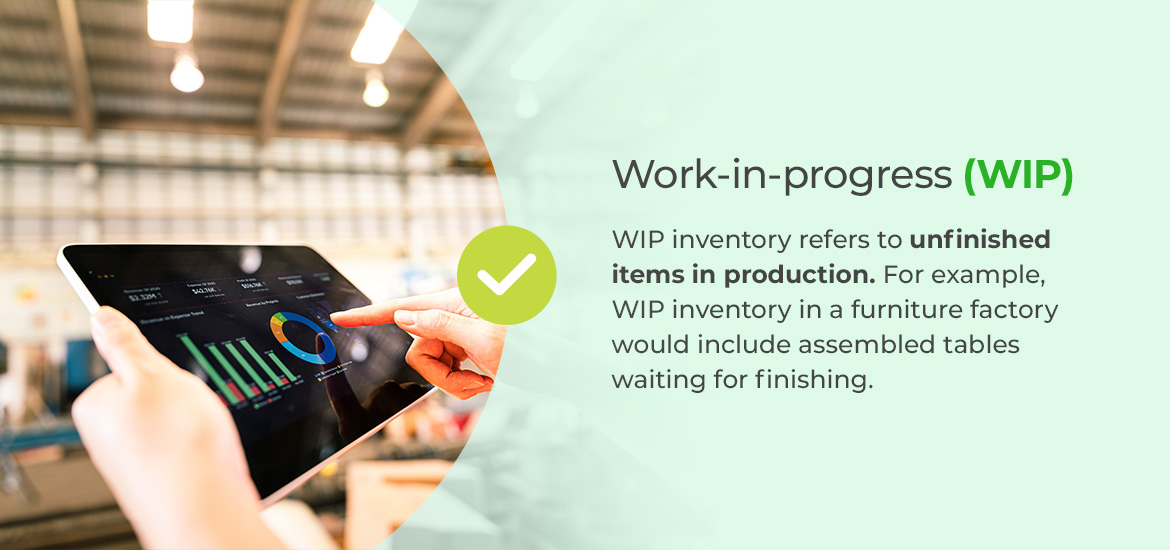
Table of Contents
- Overview of Inventory Management→
- Importance of an Inventory Management Process→
- Inventory Management Benefits→
- Inventory Management Techniques→
- Types of Inventory Records→
- 3 Types of Inventory Management Systems→
- PenguinData’s Inventory Management System→
You rely on your supply chain to keep business moving, which is why it’s crucial to have a strategy in place for responding to demand fluctuations and supply chain disruptions. An effective inventory management solution is essential for streamlining business operations, improving your company’s flexibility and protecting your bottom line.
What Is Inventory Management?
Inventory management is a systematic approach for managing your inventory at every level of the supply chain, from sourcing manufacturing components to storing and selling product. An effective inventory management strategy streamlines inventory counts and minimizes human error, enabling you to make informed business decisions.
There are three main types of inventory management:
- Manufacturing: Ensuring there is enough stock on hand so that manufacturers can fulfill orders. Manufacturing inventory management mainly pertains to inventory used to make product, such as raw materials.
- Retail: Managing the amount of product for sale at retail locations to set profitable prices and meet demand. Retail inventory management exclusively includes finished product.
- Multi-location: Managing inventory across all of the organization’s locations, warehouses, retail stores and selling channels to optimize order fulfillment. Multi-location inventory management is the most comprehensive management strategy and includes every type of inventory.
The Importance of an Inventory Management Process
Physical inventory is one of the biggest expenses for most businesses, which is why effective inventory management is so important. Proper inventory management provides visibility into every level of the supply chain so managers can coordinate production schedules with delivery lead times.
This coordination ensures there is enough product in stock to meet customer demand at all times without resulting in dead stock. As a result, a good inventory management strategy allows you to minimize your investment in your stock while maximizing profits.
What Are the Benefits of Inventory Management?
Strategic inventory management makes your supply chain more efficient, which helps your business process:
- Prevent overstocking and stockouts: The information you gather in your inventory management strategy allows you to more accurately predict reorder points so you can avoid carrying obsolete stock and minimize the time any items are out of stock.
- Save money: You have to pay carrying costs such as storage, transportation, insurance and labor until your inventory sells. Inventory management helps you minimize carrying costs by reducing the amount of inventory you need to store and transport at any given time.
- Increase sales: Following a good inventory management strategy prevents storage, picking and shipping errors that can interfere with sales and reduce profitability.
- Improve cash flow: Effective inventory management provides valuable insights into the relationship between availability and demand, increasing inventory turnover and boosting your company’s profitability.
- Enhance operational productivity: In addition to allowing you to save time on inventory counts and stock takes, inventory management systems increase warehouse efficiency so you can fulfill more orders quicker.
- Prevent overselling: Inventory management techniques help you track what you have in stock and what you have on back order, so you can avoid selling more than you can fulfill.

Inventory Management Techniques
Product and supply chain managers use various techniques to manage their inventory. For most businesses, the most effective approach is to create a custom strategy by combining two or more techniques that meet the company’s unique needs.
Here are seven of the most common inventory management techniques.
1. ABC Analysis
ABC analysis utilizes annual consumption and inventory value data to categorize your inventory according to its importance. The three categories include:
- A-level inventory: Most popular products with high long-term value — these items will receive the highest priority.
- B-level inventory: Moderate-value products that are of moderate priority.
- C-level inventory: Least valuable, lowest-priority stock.
ABC analysis allows you to price your products strategically and more accurately forecast demand, which is why it’s beneficial for e-commerce retailers and wholesalers. However, ABC analysis can be time-consuming and difficult to combine with other strategies.
2. Batch Tracking
In this technique, you group items with similar characteristics — such as manufacturing date, expiration date and specific materials used — and track them throughout your supply chain from your warehouses to your buyers. Batch tracking is necessary for perishable and consumable goods such as:
- Food and beverage products
- Pharmaceuticals
- Organic material-derived products
- Cosmetics
Electronics companies can also benefit from batch tracking because it allows you to trace quality issues back to the source. For example, if a user were to experience battery life problems, you can recall all the products in that batch without needing to touch any other batches.

3. Bulk Shipments
This technique is popular because it’s typically cheaper to buy and ship goods in bulk. It can be highly profitable for products with long shelf lives, such as:
- Raw materials for your production line
- Maintenance, repair and operations (MRO) inventory
- Wheat and grains
- Liquid or solid chemicals
- Beverages
- Oil and natural gas
Small, delicate items that come in individual packaging are generally unsuitable for bulk shipments because there is an increased risk that they could break in transit.
Additionally, securing enough space to store bulk shipments can be a challenge for smaller companies, especially when demand drops. Businesses that benefit from bulk shipping are typically very large enterprises, or they are involved in highly specific industries where demand is constant.
4. Cross-Docking and Dropshipping
Cross-docking cuts out long-term warehousing entirely by transferring your goods from your incoming supplier shipments straight onto outgoing delivery transport. This technique may require short-term storage to hold inbound goods until all the ordered products arrive, but there is still good potential for profit.
Similar to cross-docking, dropshipping eliminates the need to hold inventory by sending order details directly to the manufacturer or wholesaler, who is then responsible for shipping your products. This method completely eliminates the need for storage space, but it also reduces the amount of control you have over order fulfillment and lead times.
5. Back ordering
Back ordering is similar to offering pre-orders in that you continue taking orders and accepting payment for products that are currently unavailable. This method can boost sales and operational flexibility by allowing you to accommodate demand even when you’re unable to fulfill orders at the moment. It can also help you save money on storage space and carrying costs by reducing the amount of inventory levels you have on hand.
However, without an effective management system in place, you can easily run into logistical complications. Full backlogs with long turnaround times can result in sunk costs and canceled orders.
6. Just-in-Time Inventory
Just-in-time (JIT) inventory is a technique that involves keeping just enough inventory on hand to fulfill orders and restocking only a few days before you absolutely need to. The goal of this method is high production volume with minimal inventory on hand, which can result in significant cost savings if done correctly.
By minimizing the amount of stock in your warehouse, the JIT model reduces storage costs and the risk of dead stock. However, you have little room for error — your business needs to be highly agile to prevent stockouts.
7. FIFO and LIFO
First in, first out (FIFO) works by moving the oldest stock first. In an economy where prices are consistently rising, FIFO can increase net income by moving older, cheaper inventory first and selling newer, more expensive inventory when it has increased in price. Most businesses can benefit from a FIFO approach.
Last in, first out (LIFO) places a higher emphasis on moving the most recently purchased inventory to account for rising prices. However, this technique is only practical for businesses in certain industries because it leaves older inventory sitting until it is sold.
Types of Inventory Records
Inventory refers to more than just finished product. Everything you hold in storage counts as a type of inventory, including:
- Raw materials: These are the materials used to manufacture components or finished products. The manufacturing process transforms them into something completely new. For example, a furniture company’s raw materials would include wood, paint and fabric. Your business can produce the raw materials it needs as part of the manufacturing process, or you can purchase from a supplier.
- Components: Like raw materials, components are materials used to manufacture products. However, components remain in their original form throughout the process. Examples of components in a furniture production line include parts like knobs, screws and hinges.
- Work-in-progress (WIP): WIP inventory refers to unfinished items in production. For example, WIP inventory in a furniture factory would include assembled tables waiting for finishing.
- Maintenance, repair and operations (MRO): MRO items are what manufacturers consume during production. Continuing with the furniture example, MRO inventory would include items such as sandpaper, machine oil, saw blades and personal protective equipment (PPE) for factory workers.
- Finished product: These are your completed products that are ready for sale. In a furniture warehouse, the finished products would include completed tables, chairs and bed frames.
- Safety stock: Your safety stock is the excess inventory you keep on hand to protect your business from stockouts when demand surges or you experience supply chain disruptions.

3 Types of Inventory Management Systems
The inventory management system that works best for each company depends largely on the company’s size and the amount of stock that must be counted. Here are three primary systems that companies can use to manage and track their inventory.
1. Manual Inventory Management
Manual inventory management involves taking physical inventory counts and recording your numbers either on paper or in a digital document. It’s a good method for uncovering issues such as defective inventory and discrepancies between your records and your actual numbers.
A manual system is best for small businesses that have little stock to count, as counts can take a long time to complete. Many companies need to shut down for at least a day to ensure a good count, which can result in lost business.
2. Periodic Inventory Management
Periodic inventory systems, or noncontinuous systems, follow a schedule of manual inventory counts to provide an up-to-date idea of how much stock you have at specific times. Physical counts are critical to periodic inventory management because this system does not involve tracking individual transactions, which means there are periods of time when your records may not accurately reflect your actual stock counts.
Technology such as barcode scanners and databases are excellent tools for periodic and manual systems because they simplify stocktaking. Barcode scanners connect to your centralized software system, immediately updating your numbers as you move stock and improving the accuracy of your records.
3. Perpetual Inventory Management
Perpetual inventory management systems are relatively new thanks to developing technologies like cloud software. Perpetual inventory systems continuously update inventory estimates based on your electronic records rather than physical counts. This saves businesses money by eliminating the need to close down during physical inventory counts and improves your ability to forecast stock accurately.
These systems rely on active radio frequency identification (RFID) tags to provide real-time stock data and updates on item movements. Unlike active RFID tags, which are always on and therefore always sending information to your tracking system, you have to scan passive RFID tags to update your records.
Most perpetual inventory software programs can integrate with other business applications to enable complete visibility across the entire organization. Other key features include:
- Data analytics: Advanced supply chain analytics are critically important for creating a lean and efficient supply chain. Powerful analytics tools enable accurate demand forecasting, improved product tracking and optimized transportation.
- Real-time updates: By providing immediate access to your data, cloud-based inventory management software makes it easier to quickly respond to sudden changes in demand. Near-real-time and real-time updates and data reporting capabilities are especially important for companies that have multiple locations, warehouses and distribution centers.
- Demand planning functionalities: Accurate forecasting using historical data makes it easier to pinpoint demand changes for specific items at each stage in the supply chain. This information is critical for effectively managing your distribution network and optimizing warehouse management operations.
PenguinData Inventory Management Software
We designed our cloud-based inventory management software module with input from real field service experts to provide all the tools and resources you need to effectively manage your assets.
Using our fully digital system, you can view and edit your inventory data from any internet-connected device in real time. All users will have access to the most accurate, up-to-date information whenever they need it.
PenguinData is the key to effective inventory and asset management. Here’s why:
- User-friendly interface: Our centralized, intuitive interface is easy to learn and use, saving you time on training and implementation. Integrations with other PenguinData modules increase visibility across your entire organization.
- 24/7 access: Our system’s cloud servers are operational 24 hours a day, every day, giving you full operational control even outside normal business hours.
- Cost savings: PenguinData can help you reduce storage and carrying costs, eliminate expensive paper filing systems and minimize the risk of dead stock. Additionally, our scalable SaaS model means you’ll only ever pay for the tools you use.
Manage Your Inventory Efficiently With PenguinData
If you’re looking for a way to increase organizational efficiency and profitability, our Workforce Management platform is what you need. Request a demo today to see how our software can help you perfect your inventory management strategy.

